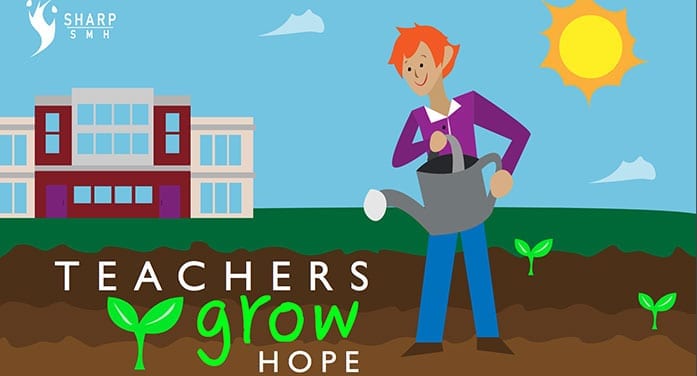A new project from researchers at the University of Alberta is helping bring the power of hope to schools during the pandemic.
Working with teachers from Edmonton’s public and Catholic school divisions, researchers in the Faculty of Education and one of its research units, Hope Studies Central, have co-developed hope-focused activities that teachers can blend into existing classroom curriculum.
The Strengths, Hope and Resourcefulness Program for School Mental Health (SHARP-SMH) helps build up students and teachers by bringing the idea of hope into the classroom, said project co-ordinator Chelsea Hobbs.
The project gives teachers “a way to connect with their own hope as a resource to sustain their own mental health,” she added. “When you’ve connected with your own hope, it filters down to the students, and they’re able to draw on their own hope and build skills to access it as a resource during challenging times.”
As front-line workers, teachers have had a challenging year, and the SHARP-SMH toolkit provides a way they can find hope for themselves and share with their students and students’ families, said Rebecca Hudson Breen, assistant professor in the Faculty of Education and one of the project’s researchers.
“Working with the teachers, we’ve seen that for them, having hope at the forefront has given them some ideas for ways to handle some of the challenges of online instruction. They’re working hard to be agents of hope for students, and those hopeful ripples spread out to families and the wider community.”
Though development of SHARP-SMH began around the time the pandemic started last year, it had been in the works well before the outbreak, said Hobbs.
It was adapted from concepts already being used with people experiencing chronic pain and Parkinson’s disease, and teachers who’d already been involved with Hope Studies Central felt it would fit well into classrooms, she said.
“They saw it as a beneficial way to support student stability and to help them combat their challenges.”
Weaving hope into their everyday lessons helps students develop resilience that can sustain them through life, said Hudson Breen. “There’s so much evidence that hope can really help with well-being, mental health, academic achievement – it bolsters problem-solving ability and as a life skill, it can help students think about the future in positive ways.”
Embracing hope doesn’t gloss over challenges, but can make them easier to tackle, she added.
“It’s not just about helping people think positively; it’s recognizing that challenges and hope can exist at the same time, and that we can nurture the skill to pull out hope when we need it.”
U of A researchers shared their hope theories, and teachers contributed curriculum expertise to collaboratively develop the SHARP-SMH toolkit, which will eventually be supplemented by feedback from students, Hobbs said.
Aimed at kindergarten to Grade 12, the tools are downloadable from the SHARP-SMH website and can be mixed into lesson plans however teachers choose.
“Teachers decide where it fits; it could be hopeful language in a Language Arts class, or mapping hope in a community in Social Studies, or using hopeful language within a math lesson if a child is struggling. Then the child has a framework to create space for the fact that they may not know the lesson yet, but there is hope for learning in the future,” said Hobbs.
Teachers who’ve started working with the hope-related curriculum are already seeing a positive impact, she noted.
“One teacher working with a parent is now aware she can be a source of hope for that parent, by spending a minute or two to acknowledge what the family is doing well. She’s not sure she’d have done that before. So it’s been impactful in a very challenging year.”
The website, which launched this week as part of a social media campaign to recognize the hard work educators have done this school year, also links to reading lists of books about hope, updates on hope-centred research and other resources.
| By Bev Betkowski for Troy Media
This article was submitted by the University of Alberta’s Folio online magazine. Folio is a Troy Media![]() Editorial Content Provider Partner.
Editorial Content Provider Partner.
The views, opinions and positions expressed by columnists and contributors are the authors’ alone. They do not inherently or expressly reflect the views, opinions and/or positions of our publication.



